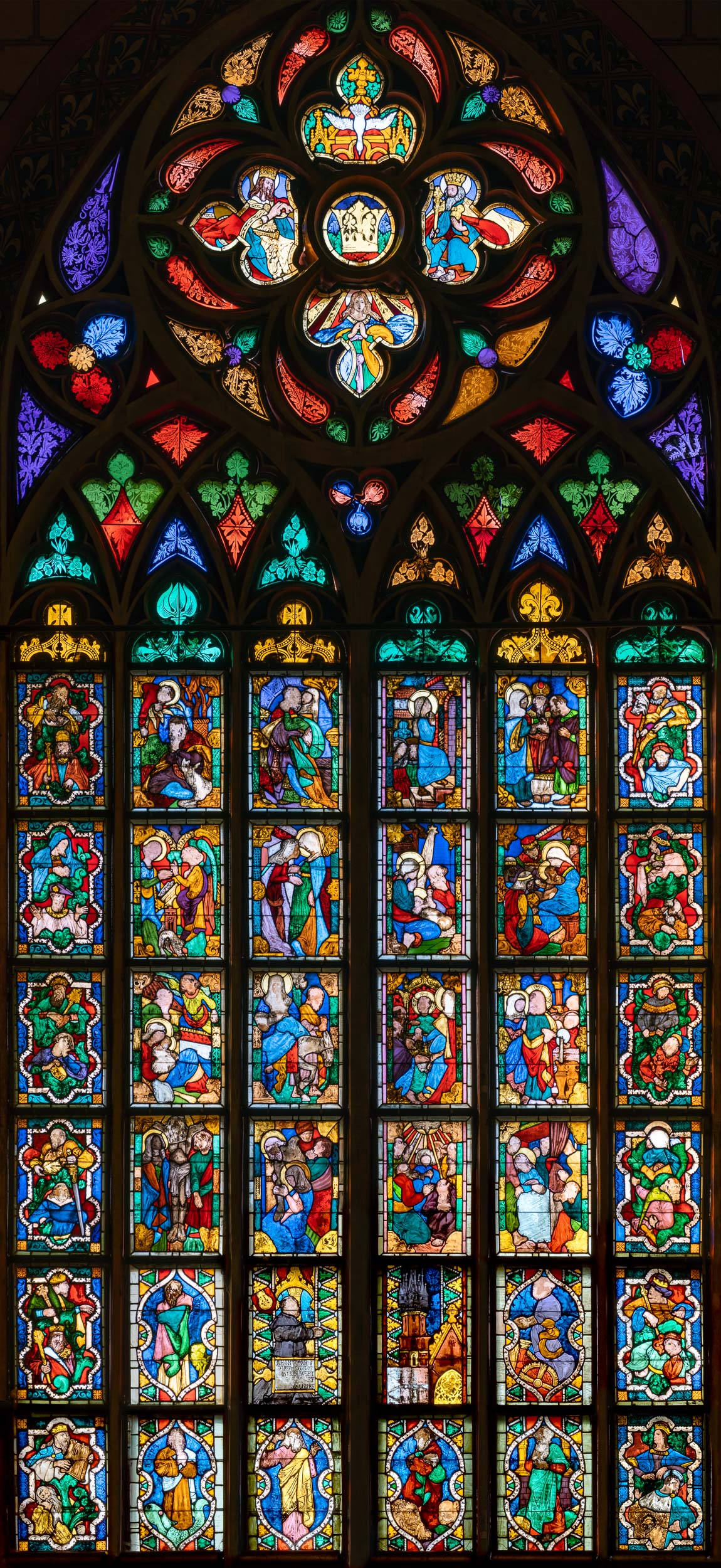
Stained glass window above the Great Organ
- Subject
- Witraż
- Contributor
- -
- Style
- -
- Date
- Projekt: 1891 r.
- Type
- Przeszklenia witrażowe
- Material and technique
- Przeszklenia witrażowe
- Size
- -
- Signatures and inscriptions
- -
- Identity number
- -
- Department
- -
- Links/analogies
- -
- Owner
- Bazylika Mariacka w Krakowie
- Copyright
- Bazylika Mariacka w Krakowie
- Location
- Chór organowy, ściana zachodnia
- Description
- The window's masquerade was designed by Jan Matejko, whose drawing is best admired from the outside. The stained glass window, on the other hand, was designed by Matejko's greatest pupils: Stanisław Wyspiański and Józef Mehoffer. It is a cycle depicting the life of Mary and the Prophets and the Tree of Jesse. It was a joint and first such major work by the two eminent Krakow artists, who prepared the cartoons on commission from Tadeusz Stryjeński during his stay as a student in Paris in the spring of 1891. Cartons of up to 20 squares have survived to the present day. Apart from one of the squares (The Tree of Jesse), signed by Mehoffer (now in the Silesian Museum in Katowice), the others have no clear authorship. On the basis of these watercolour cartoons, the stained glass fields were painted with "cold" oil paints in the workshop of Teodor Zajdzikowski in Kraków. Excluding the head, the stained glass fills 36 fields. The side fields, left and right as well as at the bottom, are occupied by Jesus' ancestors. It is thus a different version of the Tree of Jesse from the altar of Veit Stoss and the Fabian Möller stall in the presbytery. The 16 central fields are representations of scenes from Mary's life. The head (rosette) of the stained glass contains a representation of the dove of the Holy Spirit (in the finial), the crown (below it), the king (to the left) and the figure of the Virgin Mary in the centre. It is an ideological representation of the Gloria of the Heavenly Mary content-wise, referring to the scenes in the quatrefoils below.